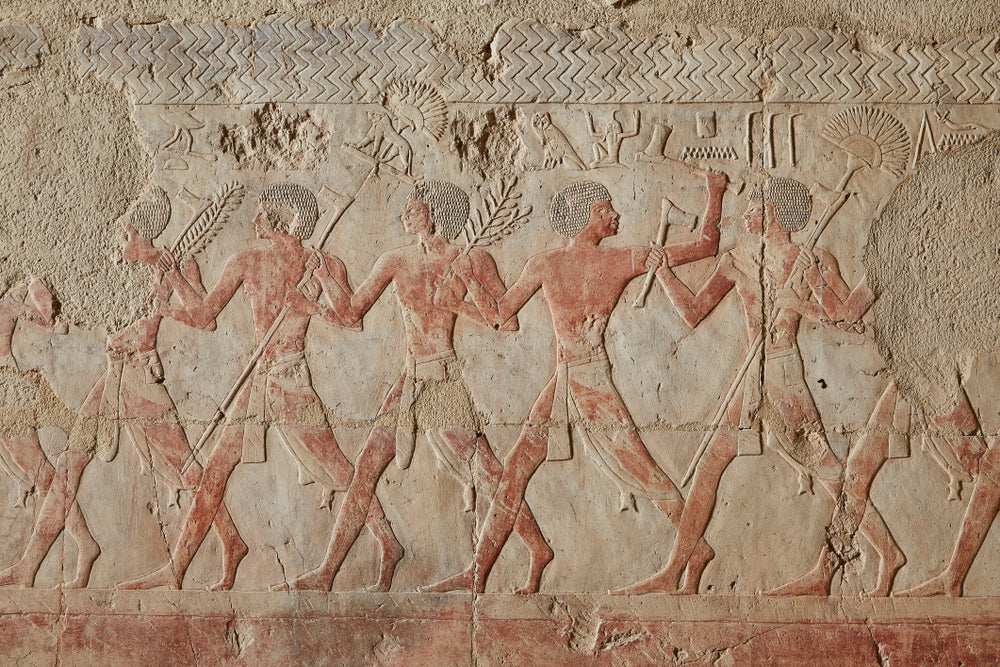
Hatshepsut, whose name means “foremost of noblewomen,” was the daughter of Pharoah Thutmose I and Queen Ahmose. After the death of her father, she became Queen to Tuthmose II, her half-brother. After he died, power passed to her stepson, Thutmose III, while he was still a small boy.
Hatshepsut took on responsibility of regent to the young Thutmose III. As the years passed, she acted less like a temporary overseer and more like Egypt’s rightful ruler, referring to herself as "King of Upper and Lower Egypt." She had herself portrayed in pictures as a man, with a male body and false beard.
Hatshepsut reigned Egypt from 1478-1458 B.C., during the Eighteenth Dynasty, the early period of the New Kingdom. She ruled longer than any other woman of an indigenous Egyptian dynasty.
She was not Egypt’s first female ruler. She had been preceded by Merneith of the First Dynasty, Nimaathap of the Third Dynasty, Nitocris of the Sixth Dynasty, Sobekneferu of the Twelfth Dynasty, Ahhotep I of the Seventeenth Dynasty, Ahmose-Nefertari, and others.
Her reign was a time of peace and prosperity for Egypt. Hatshepsut made great strides in terms of trade, diplomacy, and monumental building projects. She established trade networks that helped build the wealth of the Eighteenth Dynasty. She initiated ambitious building projects, including her renowned mortuary temple, Deir el-Bahari. She also restored neglected religious sites, supported artistic and cultural development, and left a lasting legacy.
Hatshepsut's successful expeditions to Punt, believed to have been located in present-day Eritrea, Somalia, or Sudan, were some of her crowning achievements. Punt had been a partner in trade since the time of the Middle Kingdom but expeditions there were expensive and time-consuming.
Conducted via both land and sea routes, these expeditions brought back abundant riches, exotic goods, and valuable resources that contributed to the economic growth and cultural influence of Egypt.
Neither Hatshepsut nor anyone else from ancient times left any map, any directions or distances, or anything else that definitively pinpoints Punt's location.
Following her death, attempts were made to remove her from the historical record by defacing her monuments and removing her name from the list of kings. Later scribes never mention her and her many temples and monuments were often claimed to be the works of later pharaohs.
---
Like this post? Stop by and read ”Cleopatra: Last Ruler of the Ptolemaic Dynasty.” Cleopatra ruled an empire that included Egypt, Cyprus, part of modern-day Libya and other territories in the Middle East. She first ascended the throne in 51 B.C. with her brother Ptolemy XIII as co-monarch. Following her return to Alexandria at 21-years-old, her surviving half-brother, Ptolemy XIV, was elevated to the position of pharaoh at about age 12. She was the first Ptolemaic queen with her head and name minted on coins.
I'd love to have you as a customer, head to the online store and shop for handcrafted beaded jewelry by beYOUteous.
Leave a comment